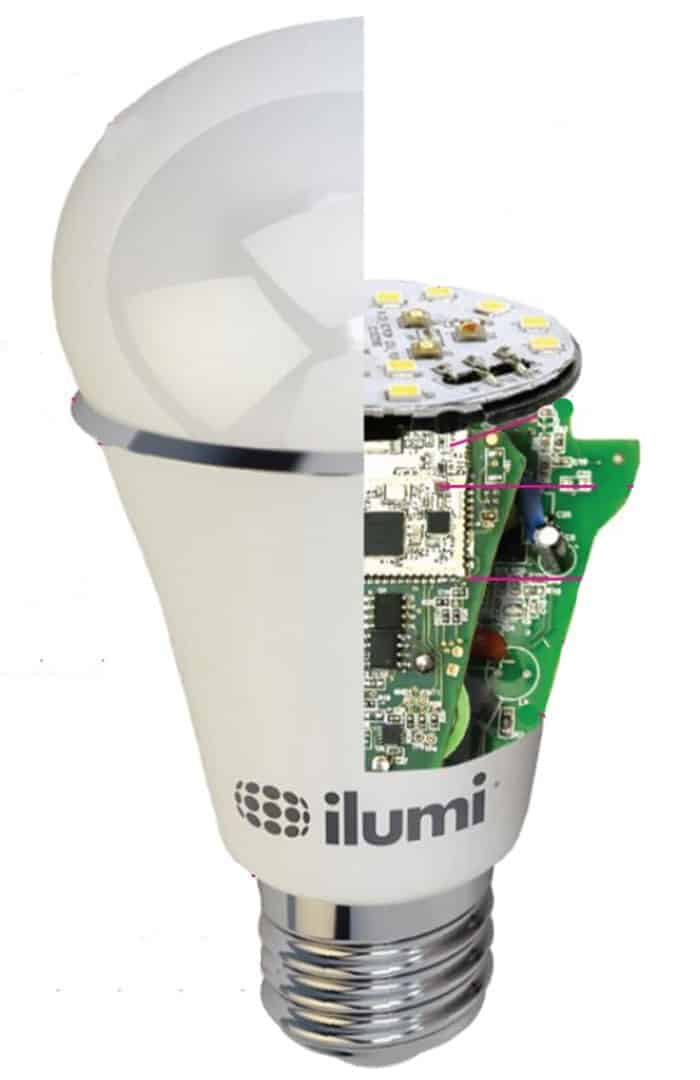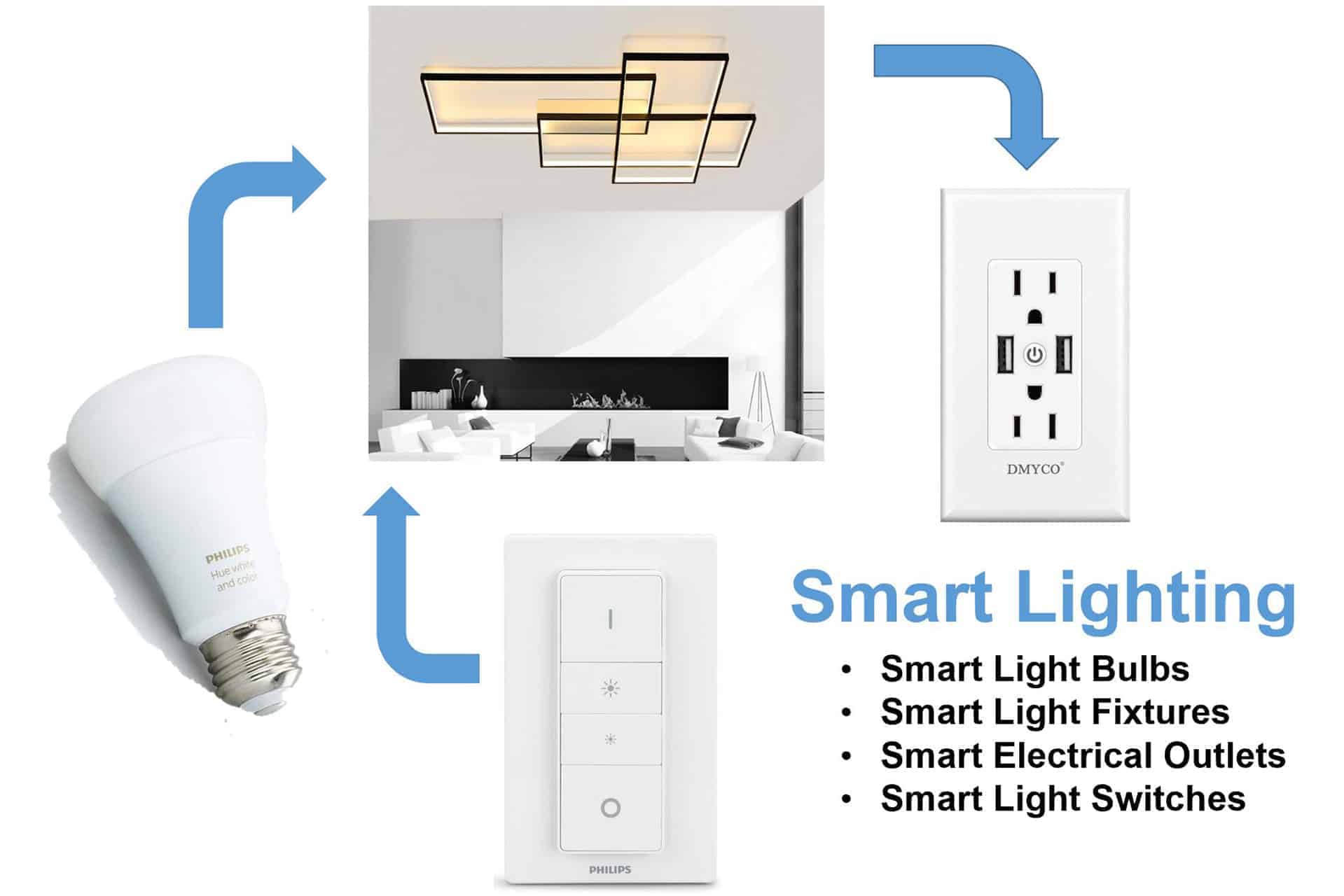Lots of people are talking about smart lighting but what does that mean? Wikipedia says “Smart lighting is lighting technology designed for energy efficiency. This may include high efficiency fixtures and automated controls that make adjustments based on conditions such as occupancy or daylight availability.”

It gets more confusing when you search for “smart lighting”. The results cover lots of related, yet different topics. The challenge is everyone's selling products while there are very few results that will help you understand the choices you have … so that's the focus of this article.
For fun though, here are the search results I found:
- Smart Light Control – from Lutron, a leader in the lighting industry.
- Verizon Smart Communities – about energy efficient street lights saving communities money.
- Smart Lighting | The Home for Smart Homes™ – with Home Depot product menu.
- Smart Light Options: Smart Light Bulbs, Lighting Kits …
- Several articles on smart light bulbs and … smart light systems
- Smart bulbs vs. smart switches, my favorite article covering most options available today.

How Smart Lighting is Different & Similar
The federal government initiated a shift to LED lighting in 2007, to save energy. For years we resisted upgrading to LED lights due to the cost of LED light bulbs, even though they can be installed in any light fixture where a traditional light bulb worked. The challenge today is deciding which bulbs to buy with lower prices and more LED functionality that's changing our homes and how we live.

LED light bulbs look similar to traditional, incandescent light bulbs but they're very different. It's the LED (light-emitting diode) electronics inside the bulb that enable the smart functions consumers want:
- Adjust lighting from anywhere via your smartphone.
- Use your voice to adjust lighting with an app, Alexa, Google Assistant or Apple HomeKit (depends on which products you buy).
- Set the mood in a room with smart lighting features like dimming and color (depends on bulbs you buy).
- Set automated lighting schedules around your lifestyle.

None of these products function in isolation. Light bulbs get screwed into light fixtures. The light fixtures connect to a home's electrical system through an outlet or they can be hard-wired inside the walls. The lights are turned on and off by one of several techniques.

The question now is whether we'll need traditional light switches or hand-held remote switches in the future. With smart lighting you can now use voice control via Alexa, Google Assistant, Apple HomeKit or a device app with integrated bluetooth technology. Apps also enable you to control lights remotely and/or create a schedule that automatically turns your lights on and off.

Smart Lighting with Smart Light Bulbs
If you search “smart lighting” you might assume it's all about smart light bulbs. They provide a great way to get started with connected lighting because the bulbs screw into your existing light fixtures. You can start with one or two smart light bulbs with built-in communications, like the ones above. Alternatively you can use a starter kit that includes several bulbs plus a hub or bridge device to communicate.
The Philips Hue LEDs appear to be the most popular in this category. The challenge is deciding which type of smart bulb you want. The decision is important because of the huge difference in pricing. What's the difference? White ambiance means you can adjust the light intensity like we've done with dimmer switches in the past … but is this feature worth another ten dollars? Adjustable color bulbs are more than triple the price of your basic white bulb.
Most smart bulbs work with fixtures that have a standard E-shape screw-in base. They won't work with specialty lights like candelabra bulbs. If your lights are on dimmer switches, the bulbs may flicker and buzz. But most important, when smart bulbs are turned off via the light switch (no power), they aren't able to receive messages.
Smart Ceiling Light Fixture
(Alexa, Dimmable, Color,No Hub)  Smart Pendant Light Wave (Smartphone, Alexa & Google Home)
Smart Pendant Light Wave (Smartphone, Alexa & Google Home) Smart Bathroom Light
Smart Bathroom Light
(Dimmable, Bluetooth,Music)
Smart Lighting Fixtures
There was a time when we thought it was strange if someone was talking with no one else around. Now that WiFi technology is common in most houses, people are talking to smart communication devices like Amazon's Echo. The Echo then communicates with other smart devices that are programmed to speak Amazon's language.
Now you're ready to pick the perfect smart light fixture for your home (more choices than examples shared above), making sure it speaks your language of choice.
Smart Light Switch
(Alexa, Google Assistant & IFTTT) WiFi Smart Wall Outlet
WiFi Smart Wall Outlet
(Alexa, Google Assistant IFTTT)
Smart Switches & Outlets
Want to dive deeper into home automation? Where smart light bulbs and light fixtures are limited to “all things lighting”, smart switches and outlets can control different types of plugable devices. While I know all the devices in my home office (laptop, extra monitor, printer, etc) stay on 7×24 unless I turn them off, I haven't plugged them into a power strip to turn them on/off together.

I'm wasting energy with these energy vampires because they continue to draw (and waste) electricity around the clock.
Somehow leaning down to a switch on the floor doesn't work for me. With a smart switch on the wall (or switch that controls a smart outlet), I believe I'd be a better consumer of energy for my home office.
What's Next in Smart Homes?
By now you realize that buying new light bulbs isn't going to be easy. Go ahead and experiment with a few smart devices include a smart light bulb or two. This will help you discover what you like … and what you don't like. Then you should be able to map out a smart strategy for your home, one that will help you pick your smart communication protocol.
For those ready to jump pin, here are some articles I reviewed that I found very helpful:
- c|net's article, Smart bulbs vs. smart switches: The pros and cons of connected lighting.
- Medium's article, Smart Lighting & Wireless Future, which may blow your mind with a glimpse into homes without wall switches.
- Smart Home Protocols Explained, Thread, Zigbee, Z-Wave, KNX and More, to learn about the strengths and weaknesses of today's connected protocols but beware, they're constantly changing.















A smart bulb is an internet-capable LED light bulb that allows lighting to be customized, scheduled and controlled remotely. Smart bulbs are among the most immediately successful offerings in the growing category of home automation.